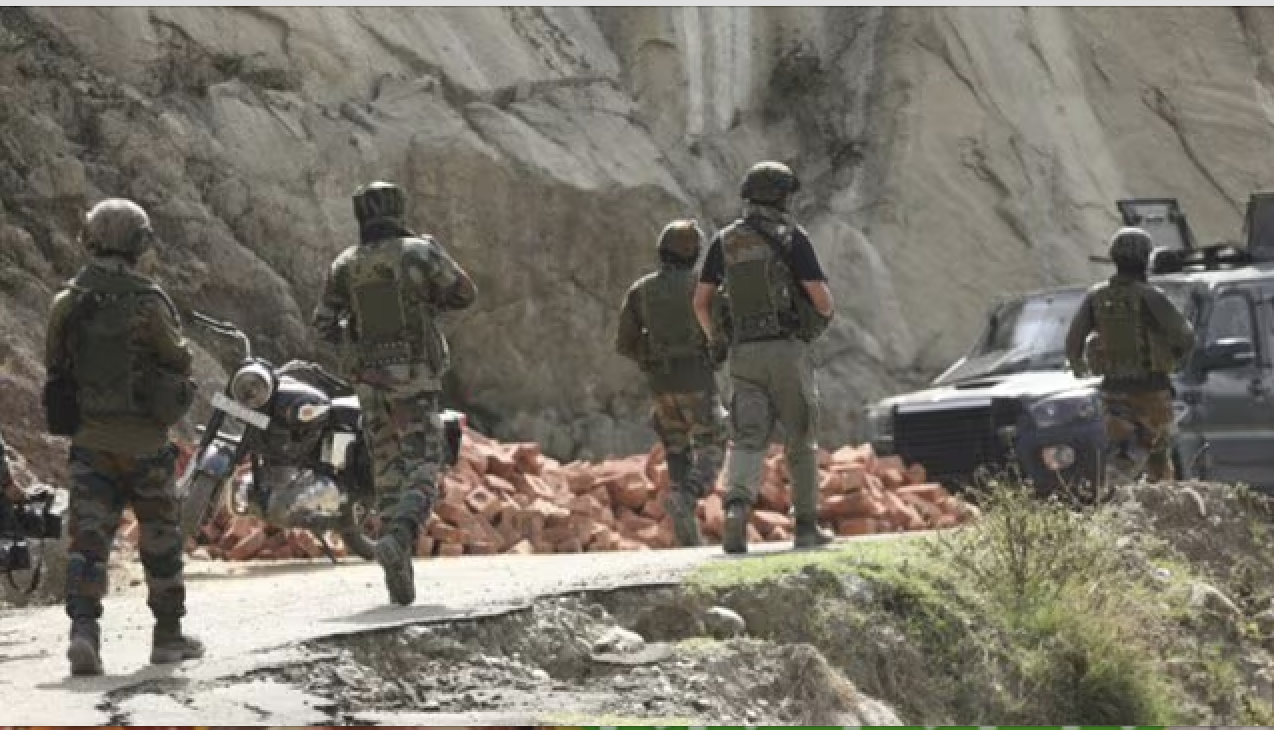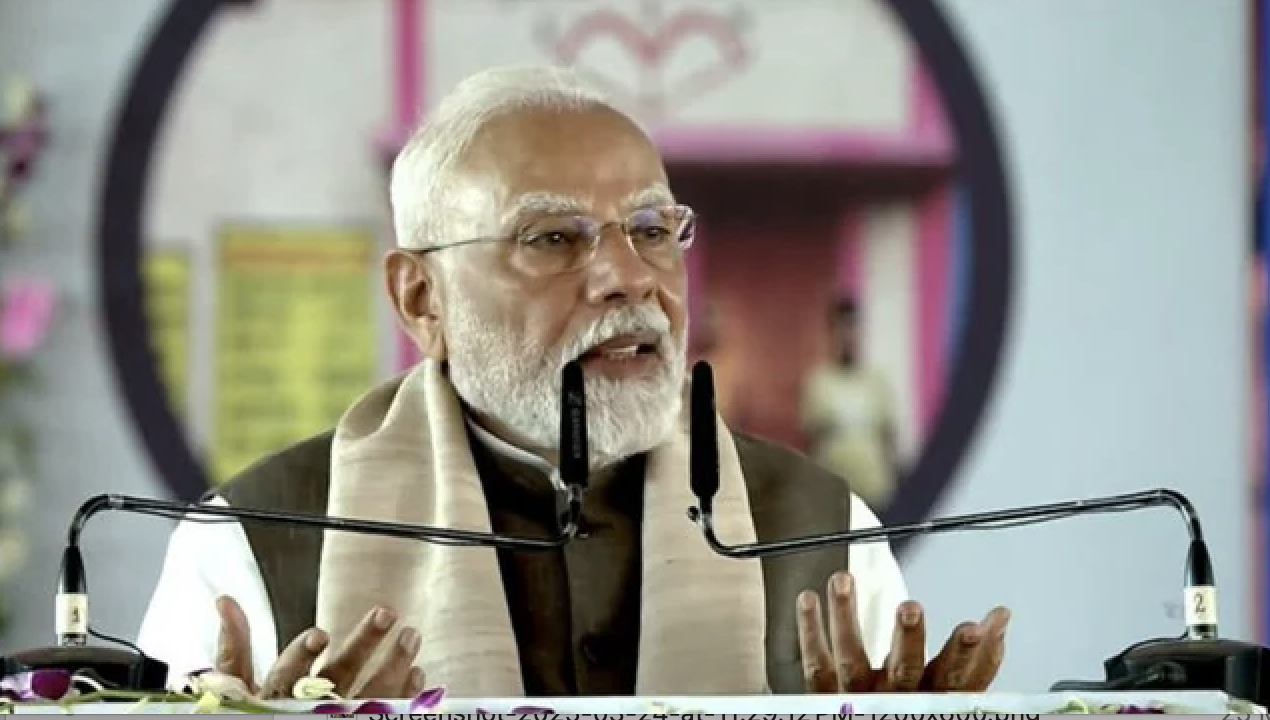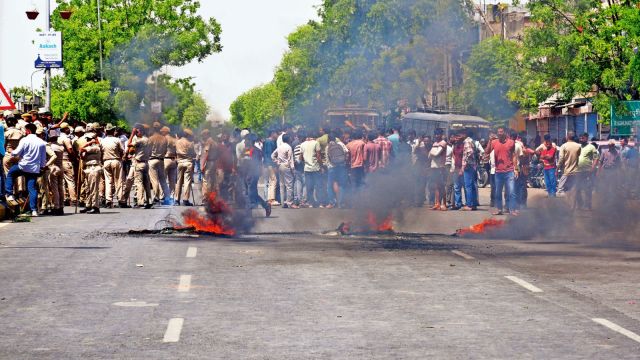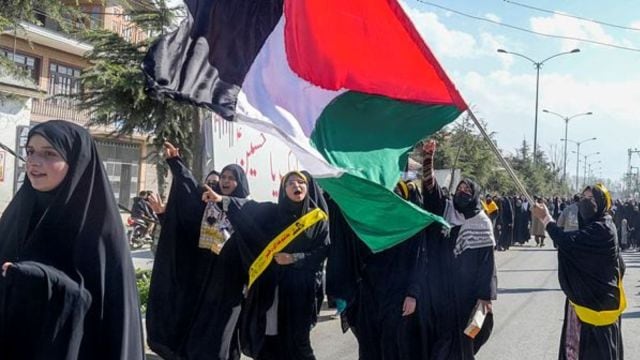
By SAFINA NABI
Srinagar: When the families of three men killed by security forces in the Hyderpora area of Srinagar on 15 November called the killing “cold-blooded murder”, Srinagar resident Jameela Banoo, 50, was overcome by grief.
The widow of Mohammad Ramzan Bhat, supposedly killed in a firefight in Kashmir in 1996, more than 25 years ago, Jameela had been elated just two weeks earlier when a Srinagar court pronounced her slain husband innocent, and the encounter—to quote the order—“fake”. She had won a decades-long struggle for vindication, but it was apparent now that Kashmir’s long history of innocent civilians being killed was far from over.
“Khoon chue barev dewan (blood leaves a trail),” Jameela, a mother of three, told Article 14 about why she fought so long to clear her husband’s name. “I had promised my late husband that I will fight till I am alive to prove his innocence.”
In Kashmir’s most recent encounter, authorities said two militants and two associates were killed on 15 November in a gun battle in the main city of Srinagar after police received a tip-off about their presence in a shopping centre. Three of the slain men’s families refuted this claim, saying the men had been used as “human shields.”
Under a new government policy to prevent gatherings at funerals of slain militants in Jammu & Kashmir, authorities refused to hand over the men’s bodies to their families, and instead buried them in a graveyard 80 km away, in Kupwara district in north Kashmir.
When the two families protested in Srinagar’s press enclave on 16 November, electricity was switched off, and the family was arrested in the dark.
Following widespread public outrage over the arrest, the bodies of trader Altaf Ahmed Bhat and dental surgeon Mudasir Gul, MD, were finally exhumed on 19 November and handed over to the families. According to eyewitnesses, Altaf and Gul had been taken by security personnel to the building where the encounter took place. Gunshots rang out 20 minutes later.
Another Encounter, Another Struggle, Justice After 25 Years
The killing of Bhat on 31 May 1996 was also initially passed off by police as a firefight with a militant.
While Jameela, who is now a housewife, doggedly followed up with the police regarding investigation into the case, years passed with no progress in the probe.
She finally approached the State Human Rights Commission (SHRC) in 2003.
The SHRC’s inquiry established that Bhat was innocent, and when Jameela reached out to senior police officials with the SHRC’s findings, the case was reopened in 2006 but with little progress thereafter.
She petitioned the SHRC again. In 2007, the SHRC filed another report stating that Bhat had been killed in a fake encounter. This also did not yield official action against the perpetrators.
In a protest petition filed before the NHRC in March 2021 in response to a police closure report in the case, Jameela said two armed guards posted with the government’s social welfare department at the Miskeen Bagh office in Srinagar, named Majeed and Azam Gujjar, had taken essential commodities from her husband’s store on credit.
When Bhat demanded the money back, the guards got angry and, “with the help of special operations group (SOG) Rainawari, arrested Bhat and took him to Rainawari police station where he was tortured”, resulting in his death, said Jameela to NHRC.
Mir Hussain, then SHO (Station House Officer) of Rainawari, and the guards then threw his body in a drain, her petition said, after which the conspiracy around an alleged firefight was planned.
In 2006, the case was reopened by the senior superintendent of police (SSP) of Srinagar, who entrusted the investigation to the special investigating team (SIT) of north zone, Srinagar. His order asked for the probe to be completed by the said SIT “on priority”.
According to a Srinagar court order issued on 28 October 2021, there was no progress in the case after 2006.
The court’s most recent order, pronounced on 28 October, the SHO of Rainawari, Mir Hussein, constable Nooruddin and constable Ali Mohammad misled the investigating agency about the incident.
“The said public servants are liable to be prosecuted for commission of offences of abduction and murder,” the court said.
Extra-Judicial Killings Continued With Impunity
Despite political parties and civil society condemning such killings of civilians in the Valley and notwithstanding several inquiries into these incidents, fake encounters in Kashmir have continued.
Men in uniform have not been convicted for the extra-judicial killings, as in the Pathribal fake encounter case of 2000, the Ganderbal fake encounter case of 2007 and the Machil fake encounter case of 2010.
In 2018, the Union government informed the Rajya Sabha that it had received 50 requests for prosecution of security forces’ personnel from the Jammu and Kashmir government. It had denied sanction in 47 cases. In three others, the matter was pending.
“Using innocent civilians as human shields, getting them killed in cross firing & then conveniently labelling them as OGWs is part of GOI’s rulebook now,” former chief minister and chief of the Peoples Democratic Party (PDP) Mehbooba Mufti said on Twitter after the November encounter and arrest of the protesting family members.
OGWs are ‘overground workers’ of proscribed organisations. She called the encounters a “rampant culture of impunity”.
National Conference vice-president and also former chief minister Omar Abdullah called, on Twitter, for an “impartial” and “credible” inquiry into the Hyderpora encounter.
On 18 November, the J&K administration ordered a magisterial inquiry into the Hyderpora shootout, but the families sought an independent investigation.
Magisterial inquiries in the past have not resulted in convictions of those who committed the crime. Since 2008, 108 magisterial inquiries have been ordered in various incidents of violence in J&K, The Wire reported on 27 November. None of these inquiries led to a conviction.
The International Forum for Justice and Human Rights, a local human rights group, filed a petition before the SHRC in 2018 seeking details about magisterial inquiries ordered since 1990.
In its response, the commission said more than 500 magisterial inquiries had been ordered since 1990, of which only one was completed but the report never submitted.
More recently, on 18 July 2020, three men were killed in an encounter in Amshipora village of south Kashmir’s sensitive Shopian district. When their pictures went viral on social media, their families claimed that the men were their kin, and had travelled to Shopian to work as labourers.
On 18 September, the Indian Army said after an internal probe that evidence indicated that the soldiers had exceeded their powers under the Armed Forces Special Powers Act (AFSPA), 1958.
Despite evidence that the firefight was fake and despite the army filing charges and announcing that they were headed towards a court martial, no clear status of the case is available.
One SIT Will Probe Another SIT
In the case of Jameela’s husband Mohammad Ramzan Bhat who was killed in the Miskeen Bagh area of Srinagar, it took a 25-year legal battle before a Srinagar court declared him innocent and ordered the formation of an SIT to investigate the case.
Shabir Ahmed Malik, second additional munsif, judicial magistrate first class, Srinagar court, observed in an order on 28 October that the instant closure report in this case appeared to be the outcome of a botched investigation.
The judge concluded that the investigation had not been done properly from the beginning. “It has been alleged that the deceased has been killed in an encounter while as (sic) post mortem report suggests otherwise. It’s unfortunate that the investigating agency has not viewed the matter with a sense of responsibility,” the order said.
The court directed the SSP of Srinagar to form an SIT headed by an officer of a rank not lower than a deputy superintendent of police (DySP) to investigate the case and the role of all officials who played a key role in the investigation prior to the case being reopened in 2006. The court ordered the inquiry to be completed “in a timely way, ideally within six months”.
This will be the first time that one SIT will be investigated by another.
Writer and former head of Amnesty International India Aakar Patel said security forces and police in Kashmir have functioned with impunity for decades.
He said he was not surprised that incidents like the Miskeen Bagh encounter took place. “The real surprise is that the wheels of justice are moving. They haven’t for the armed forces, none of whom has been prosecuted in a civilian court since 1989 for crimes against civilians,” he said.
Patel said the courts must be more active in ensuring that justice is done to the “thousands of victims and survivors of state violence in Kashmir”.
‘They Beat Us With Batons, Threatened Us’
On 30 May 1996, Bhat returned home after three days on election duty. A daily wager with the power development department, he had been posted at a polling booth during the parliamentary elections.
“I served him breakfast. He wanted to take a bath, but I asked him to get me detergent first,” said Jameela. “He went out to the store that he operated after duty hours, and never returned.” The store was located just outside their house.
Jameela was preparing to start the day’s laundry when she heard a loud scream and ran out of the house. A white Gypsy stood outside, and some men in police uniform.
She heard her husband scream; his brother would tell her later that the men beat him with guns inside the shop. After some time, they carried him out on their shoulders, unconscious, bundled him into the jeep and left. Jameela and a few neighbours ran after the Gypsy.
“When they saw us following them, they opened fire and we stopped,” she said. Minutes later, they took bicycles and auto-rickshaws and tried to locate the police vehicle, finally spotting it outside the Rainawari police station near Vishwa Bharati College.
At the police station, Jameela and some men from her neighborhood tried to ask why Bhat had been picked up. “They beat us with batons and threatened us with dire consequences, but we were also resolute. We stayed there,” she said.
After some time they saw Bhat being taken away in the same vehicle and once again began to follow it.
Later in the evening the vehicle went inside Miskeen Bagh Centre, a government building. They waited outside until 10:30 pm, unable to get any information or see much in the dark. They decided to return the next morning.
“We were not able to sleep throughout the night. I kept looking at my three children; the eldest was five years old,” she said. She began to pray.
Rainawari and Miskeen Bagh are adjoining areas, and Miskeen Bagh Centre is located at walking distance from the Bhats’ home. Around 11:30 pm, they heard shots being fired, heavy firing that continued till 11:45 pm.
Early the next morning, Jameela visited the Rainawari police station again, with her two sisters-in-law. They were sitting outside when two young boys informed them about two dead bodies that had been found in a nallah (canal) just behind the Miskeen Bagh Centre.
Jameela sent the two other women to check. “I told them not to return if the body is that of Ramzan.”
She didn’t need to wait long, as a neighbour arrived on a scooter to fetch her.
“As soon as I saw him, I understood that my husband is dead,” she recounted, wiping her tears. She asked anyway, and he nodded a silent ‘yes’.
Back home, there were people everywhere, some came forward to hug her, or console her.
“Some were just crying loudly,” she said. “Others were beating their chests.”
Evidence Of Custodial Torture
Bhat’s postmortem report said there had been a “sharp penetrating injury to the right peripheral region leading to liver laceration, hemorrhage shock, cardio respiratory arrest and death after the deceased suffered multiple injuries”.
According to Jameela, her husband’s body bore torture marks including a deep cut on the side of the abdomen, what looked like belt marks on both wrists, and a bruised right eye.
“Fractured upon 8th, 9th, 10th ribs, posterior right side, fracture dislocation and injuries to right ecchymosis around right eye, strangulation marks on both the wrists,” the report said.
The following day, 1 June 1996, Khanyar police station received a docket which said that at 11 pm on 31 May, at Miskeen Bagh, unidentified militants fired upon the police and government forces searching the area. The docket said “the militant Mohammad Ramzan Bhat who was part of the Zarb-ul-Mujahideen group” was fatally injured while the other militants fled in the dark.
The then SHO of Khanyar filed FIR No 88/1996. Bhat’s body was taken for a postmortem and handed over to the family.
The case was later closed as “untraced”.
October Judgment Was A Ray Of Hope
Jameela’s counsel Tabasum Rasool said while it is true that the family had to suffer and wait for justice for 25 years, the judgment that came in October is “a ray of hope that justice prevails”.
She said Jameela’s case could become a bridge between the people of Kashmir and the judicial system. “Undoubtedly, law punishes the culprits and justice will prevail for sure,” she said.
Meenakshi Ganguly, South Asia director of Human Rights Watch (HRW), said authorities in Kashmir have repeatedly failed to ensure justice in cases of fake encounters. “Perpetrators all too often have not been held to account,” she said. “And families have received no reparations.”
Ganguly said HRW previously documented a number of cases in Kashmir that reflected the same findings as the SHRC’s report in Jameela’s petition, “where independent investigations indicated wrongful killings by security forces.”
Jameela, who had to fight multiple battles in raising three children after losing her husband at a young age, said she was unwavering in her resolve to fight for justice. “This order has brought me closer to that justice,” she said.
This story first appeared on article-14.com






